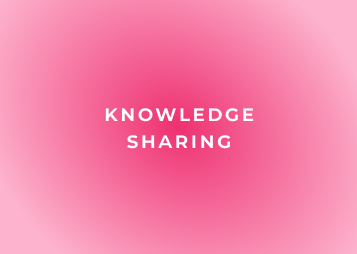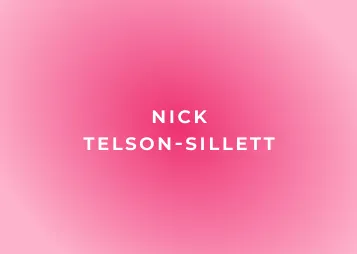Shelley Lavery is Jiminny’s CRO and Co-Founder. With over a decade of experience in coaching B2B sales teams, Shelley is now responsible for revenue, looking after the entire customer lifecycle from pipeline entry all the way through to becoming a client and renewal.
Here she bares all on Jiminny’s pipeline leakage issues, how she and the team tackled them and how her mindset has changed towards this ever-present business issue.
What does pipeline leakage mean to you?
For me it simply means to lose a lead or an opportunity from the pipeline that we shouldn't have lost.
When you're looking at your funnel, unfortunately there's no such thing as 100% conversion.
The idea is that you understand that from entry point through to closed, what your funnel metrics are. If you're losing more than you would expect, the gap between what's expected and unexpected, for me, is where a leak is happening.
What's been your experience of pipeline leakage?
I think there’s always pipeline leakage. And there should be.
Because nothing's perfect so if you think that you haven't got it then you're just not looking hard enough!
If you are constantly iterating your sales process, you are opening up for problems. So therefore you have the potential for leakage. If you are bringing new people into your business then you open yourself up to leakage. Because those are both risk factors, I think it's naive to say “we've never had pipeline leakage”.
It will be happening right now and it will always be happening, it will just shift. It's almost like a great big pipe of water and there's bursts coming up, some of those bursts are bigger and more powerful than others. You’re just constantly trying to focus your attention and plug the right gap.
When we set up our BDR function, the leakage was around making contact with someone and finding out for example that it's not the right time. And then instead of nurturing that lead properly, we were ignoring them and didn’t have a good plan.
Consequently, the potential for that lead has completely leaked out the funnel. And on reflection, I look back at previous sales leadership roles, I've definitely made that mistake in the past as well.
We're in a fairly competitive market so when you do make contact with a prospect there is a really good chance, around a 50/50 chance, that contact was already in contract with another provider. So the key thing is to make sure that we are going back and getting in touch at the right time. If you’re not doing the work and have the processes behind that, you're missing out on an opportunity. The biggest frustration now more than ever, is the effort it takes to get hold of a prospect, to get their attention and connect them with you and your brand. So to then not follow up in the right way is such a wasted opportunity.
I think a big part of it comes down to mindset - of people and of leaders. We are always chasing the NOW - today’s KPIs, this month’s target. The issue with ‘nurtures’ is that the sales leader won’t hit that next target with it. It’s for the future.
You want to try and create some kind of longer term mindset within your team but also you need a process that is supportive for an ever-changing team so that you're not losing the groundwork when your team changes.
What would be your process if you have nurture accounts and people in the team leave?
Reporting and tracking the next activity that's required is key. If somebody new is coming in and somebody was leaving, you can simply pull that list up. Everything is there as part of a process to make sure next steps in the nurture cadence are in place and we can pick them up for a very easy transition.
But it’s that mindset shift again, around not saying “it’s a nurture, chuck it in an automated nurture stream”. Instead, think “hang on a minute we've just spent all that time getting to that point of connection why wouldn't we continue to develop that in a much more personalized way?”.
So based on the time frame between now and when we next reach out to them, we're going to pick a cadence that seems like a good, appropriate amount of touch points.
It’s also about managing that change. If you've got someone like Mike in our team who's recently moved from a BD into an AE role, he started connections with nurtures, he carries them into his new role. The relationship is always Queen, they need to move with him.
How do you optimize your nurture cadences for these prospects?
So the cadence was the structure but the touch points were completely personalized. Completely bespoke based on what we've learned about the prospect, their company and new features that are coming out. Being able to really tailor that message was important and that fed into the mindset of the BDR because they still had ownership over that account.
I think on top of that we created a nurture target. So if you hit your nurture target you’re rewarded in the same way that you can be rewarded for booking a meeting. It ascertains to the fact that we know that 30% of our nurtures ended up becoming a meeting at some point in the future.
That was another process change for our BDRs, it wasn't all about activity. It’s about considering your pipeline and your nurture pipeline to hit your meeting targets.
We talk about the skill of a salesperson and we talk about the importance of determination, being resilient and organized. But I think we talk less about patience and with how challenging sales can be, patience is huge. You can't have everything tomorrow and that mindset shift can make a big impact.
What made you act on your pipeline leakage?
The tipping point was looking at the conversion rate our sales pipeline management software. Comparing the volume of activity in and the meetings coming out the other end, which was really way under what I would expect, maybe at one or two percent. When you see that, you think “if that's the output on the meetings what's happening in the other buckets?”.
So you're trying to look at the contacts that we've made and the key things that are happening within that contact. Now “nurture” was huge, there was just a huge amount of nurtures coming out of our connection rate. So it's not that we've got a lot of people just not interested, we have a lot of people that aren't ready to talk to us right now.
Why were they not ready to talk to us right now okay? Well 50% of them were already in contract, other reasons were budget, things going on within the economy etc.
So for those nurtures, how do we maintain that relationship?
All of a sudden what felt like “oh god all of this work for nothing” actually “it's all of this work for growing that future garden”.
What teams were involved in fixing your pipeline leakage?
Predominantly the BDR team because that's where the ownership was. Having said that, I'm a big advocate of working as a team and for the BDRs to work alongside the AEs.
If you’re nurturing, a change of voice can be good. Getting them in is often thought about much later down the pipeline. But if you’ve already messaged someone three or four times, could we bring Nick, an AE, into the equation because maybe Nick's worked with a company just like theirs, and has an understanding. There is a joint responsibility with every single account that you're working.
How are things looking now?
We're talking nurture here so changes didn’t happen overnight but what I can say is that I was with the team I was recently and you could see that 50% of their meetings booked each month were coming from nurtures, who would previously have been lost from pipeline.
There's so much value in developing things for the future. That definitely seemed to come true in the results that we saw.
How has your mindset towards your pipeline changed?
I think more about pipeline as an everlasting thing now. What I mean by that is there's pipeline within the lead stage and pipeline within the opportunity stage but actually there's pipeline in the customer stage as well. If you constantly think of your pipeline as something to protect I think it changes how you behave.
The mentality for me with pipeline is one of “where's the risk?”. When I look at deal reviews, I think “where's the risk? Why wouldn't they buy?”. And it's the same thinking about the client cycle “great they're using it, but why might they not renew?”.
Continuing that thought process and not taking for granted that an account could be a leak anywhere, at any point across the whole cycle.
What would you recommend to other people facing pipeline leakage?
Have really, really good foundations.
First of all have your process mapped out. Have a really clear definition, ask your marketing team what an opportunity is, ask your BDR team what it is, ask sales team what it is. I'll give a hundred pounds to anyone who can tell me that it is completely aligned across the three groups.
The same for every bit of the pipeline. The minute you're not clear on definition you've got problems around what each part of the process is and means. Then you’ve got to understand what your expectation metrics are at the point of design. Because you need to know what you’re comparing it to. If you're a startup, the best thing you can do is use benchmarking and best guess judgement. But if you're more developed and you've got previous data to go on then that's brilliant.
My final piece of advice is not to rely too much on averages. So whilst you're building this whole thing based on averages, it doesn't actually tell you anything when it comes to pipeline problems.
A really good example of that might be in our funnel metrics we have a conversion rate of 30% from opportunity to closed/won. But when you break that down by segment and you start to look at SMB, mid and enterprise that conversion rate can change from 15% all the way up to 60%. That can really feed into what's happening on an individual level within those win rates and conversion rates.
So my final piece of advice is dig, dig, dig - don't stick with the top line average look behind those averages. How much further can you keep cutting up the data to really understand where the problem is because that surface level only gets you so far.
We also spoke to Mark Burrett, Head of EMEA Sales, at nudge, for his take on pipeline leakage. Check out his full interview here.





.webp)






